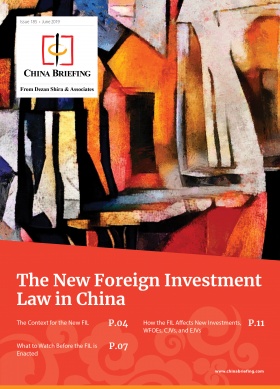Digital Marketing in China: Tips for Foreign Businesses
Penetrating the Chinese market successfully means businesses have been able to distinguish their products from substitutes in the market.
Achieving this level of brand consciousness can be challenging; promoting a brand in China is different from that in the rest of the world.
Brand awareness relates to the effect that a brand has on people’s minds. What this means is that a customer can connect the name, the logo, the slogan, and/ or other attributes to one specific product or company.
In this article, we explore the digital marketing strategies that businesses can leverage to build their brand in China and have a pulse on its constantly evolving market.
Digital marketing is key to selling in China
Any talk about developing brand awareness in China today requires targeting its pervasive digital environment as a priority strategy.
According to the China Internet Report 2018, China’s internet penetration is just over 50 percent.
Its sheer scale means there are three times the number of smartphone users and 11 times the number of mobile payment users in China than in the US.
In addition, the number of rural internet users in China reached 209 million in 2017, with a penetration rate of 35 percent.
The China Statistical Report on Internet Development claimed in August 2017 that China had an online population of 751 million users and over 95 percent were using mobile gadgets to access the internet.
Understanding China’s internet behavior
Today, on average, the Chinese spend three hours every day on their smartphones, mainly on social media and e-commerce platforms. Hence, a strong mobile presence is fundamental to a brand’s growth, development and continuing presence in the Chinese market.
China’s digital marketing landscape also shifts rapidly, and foreign firms slow to reacting to online trends can be left behind very quickly.
Brand managers should also note that China has a domestic substitute for most international websites and social media platforms.
Thomas Crampton, Hong Kong-based Asia-Pacific Director of Digital Influence at Ogilvy Public Relations Worldwide, gives a great comparison of Chinese and Western social platforms, their differences, and similarities. Sina Weibo is the equivalent of Twitter in China, while Tudou and Youku are similar to YouTube.
Further, there are differences between the online behavior and habits of Chinese citizens and Westerners.
In China, people spend much more time online than in the US; it can be compared as one hour against 15 minutes. For example, people in China visit e-commerce websites such as Taobao and Tmall daily to explore new goods, instead of making a visit to the largest supermarket nearby.
Chinese also use online video platforms differently from how Westerners use YouTube. 70 percent of the uploads on Youku and Tudou is professional content, unlike on YouTube.
Several equivalents of the social media giant Facebook exist in China:
- RenRen (formerly Xiaonei): Copied the Facebook model and started with students; it has since become open to all.
- Kaixin001: Attracted white-collar office workers by focusing on fun, addictive social games.
- Qzone: Gained young teens and rural users via cross-promotional traffic from QQ Messenger.
- 51.com: Started strong in lower tier cities, but growth has since slowed.
In addition, the most widely used messenger platform for the Chinese is WeChat, developed by telecommunications giant Tencent.
WeChat is a mobile social media platform that has transformed the way an estimated one billion users run their professional and private lives. While WeChat can be compared to the global messaging platform, WhatsApp, its service capabilities make it much more valuable to its users through its multiple functionalities.
For instance, WeChat has a digital wallet and users can make in-store payments for goods and services or top up a mobile phone account; companies also let clients order via WeChat. WeChat then lets people track those deliveries and scan a bar code in-store and find out if something is cheaper online.
Yet, the social media landscape in China is also highly dynamic, with new platforms constantly emerging and older ones evolving. An example is WeChat’s Mini Program, which functions as an app within an app on the platform and has proven to be highly lucrative for luxury e-commerce.
This is why it is important to communicate with digital media experts when strategizing your brand promotion online in China. In comparison to the West, Chinese customers don’t use social media to contact their friends as much as they use it to look up information about brands and promotions, make purchases, send money, and increasingly use reviews by those in their social networks to make spending decisions.
Such behavior has changed the investment policies of brands in recent years, with a push to strengthen visibility on online platforms such as WeChat and Tmall.
Why branding matters to your business
Intangible assets (assets that lack physical substance – for example, patents, copyrights, franchises, goodwill, company or product identity) are becoming increasingly important for the economic development of enterprises.
Among these assets, brand management plays a leading role in strengthening the company’s competitiveness. Successfully promoting a brand communicates to the uniqueness, target reach, and exclusivity of the business or product, thereby impacting its reputation in the market.
The distinctive feature of the brand is an important advantage for a company. Hubert Rampersad, an international consultant on quality management, explains that the brand of a company consists of its ambitions, specialization, services, and unique value proposition or USP.
This unique value or USP is central to how valuable and visible the company can become in the market.
Nowadays, brands act as anchor points to help consumers navigate the multitude of products offered by other companies.
Yet, it isn’t enough to relate brand awareness with its impact on consumers alone.
Here, businesses need to note that the efficiency of managing a brand is directly dependent on how the company’s employees understand the brand and promote its values to the final consumers.
Undoubtedly, the most powerful Asian digital market is Chinese.
The reasons – a large population, openness to the introduction and study of new technologies, and an abundance of professionals educated in Europe or the United States.
China also has the wherewithal to develop technology and apply new ideas much faster than any other country and international businesses need to be prepared to react quickly.
Digital marketing in China – trending strategies for your business
Here we discuss some of the core trends for 2018 that businesses should take note of while formulating their digital branding strategy. These are based on the trends highlighted by the digital market research firm, L2.
Short videos: The first major trend is the short video format. According to L2’s China Online Video Insight report – short video viewers were predicted to reach 353 million in 2018. The short video platform Miaopai has become attractive for branded content online. Weibo posts say that brands promoting through videos earn three times more.
While incorporating this strategy, the brand manager has to remember the “Five seconds is all you have got!” rule, which means you have to catch the attention of the viewer in the first five seconds.
Omnichannel policy: No single equation or algorithm will accurately tell you when and why each client will make an acquisition or purchase. E-tailers like Alibaba and JD.com use omnichannel e-commerce because they have built up offline investments over the last year.
Alibaba’s “New Retail” omnichannel policy was presented at the Singles’ Day e-commerce festival in 2018. Retail customer interaction has been rapidly changing over the years, from the traditional way of visiting storefronts to shopping in the comfort of our homes via e-commerce, and now to New Retail.
Although the integration of Online and Offline (O2O) commerce is not an entirely new concept, New Retail demands for greater customer-centric engagement – achieved seamlessly through leveraging data technology.
Enabling group purchases: This is a fast growing trend based on the split/share model. For instance, Pinduoduo’s social media model encourages a close group of people to buy together to avail bigger discounts. It forms a remarkable portion of the online sales of some brands.
As an example, 10 percent of all online sales of the Blue Moon laundry detergent are now made via the Pinduoduo platform, with future sales expected to expand further.
The word-of-mouth phenomenon: Online buzz is key to brand appeal, longevity in China
The maintenance and development of online word-of-mouth is fundamental to sustaining your business and relevance in the Chinese market. Important tools to create online buzz are:
- Social media networks like WeChat, Weibo, Youku, and Tudou.
- Online shopping websites like Taobao.
- News websites like Sine China.
- Online communities like Douban.
It is necessary to stay updated with the most popular platforms as well as the latest issues and topics trending on these platforms, and to use and develop them to promote your brand effectively.
A good example is Longchamp, a French luxury leather goods company. Longchamp leveraged the power of social media and mobile shopping to effectively appeal to Chinese millennials.
Using WeChat’s mini app, they created an e-commerce platform for online ordering and payment. Users could customize their purchases within the app. They could select the colour of the bag, badges, and even imprints. Afterwards, they could use WeChat pay to track their shipment.
Additionally, the content marketing on such media platforms should be engaging for consumers; the plot should be entertaining and informative.
This is important as content marketing involves the creation and sharing of online material (such as videos, blogs, and social media posts) that may not explicitly promote the brand but is intended to stimulate interest in its products or services.
It also allows a consumer to hold, sometimes lasting, positive or negative associations with the brand.
Consumers can give direct and immediate feedback on these social channels, making it crucial for firms to be watchful of their online behavior and promotions strategies to preserve the image of the brand.
Finally, promoting the brand and increasing its recognition in the Chinese market can be a tricky and difficult task – but no more so as in other large and diverse countries.
Simply put, businesses need to identify trends and study the specifics of the market, buyers and rival sellers / promoters.
One thing is for sure, brand promotion in modern China is impossible without digital marketing and online brand management.
About Us
China Briefing is produced by Dezan Shira & Associates. The firm assists foreign investors throughout Asia from offices across the world, including in Dalian, Beijing, Shanghai, Guangzhou, Shenzhen, and Hong Kong. Readers may write to china@dezshira.com for more support on doing business in China.
- Previous Article Les vacances de la Semaine dorée : Les touristes chinois explorent de nouvelles destinations et des expériences originales
- Next Article How Brexit Britain is Already Massively Increasing Investment in China








